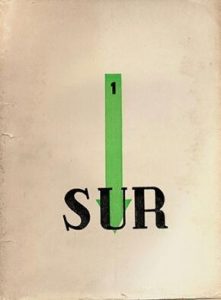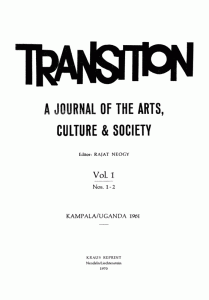Professor Francesca Orsini is the Principal Investigator of the MULOSIGE project, and leader of the North India case study. She is Professor of Hindi and South Asian Literature, as well as Chair of the CCLPS. Her research interests range from modern and contemporary Hindi literature to the multiligual history of literature in early modern North India. Prior to this project, she ran the AHRC-funded “North Indian Literary Culture and History, 1450–1650” (2006–09) and a British Academy-funded international collaboration with SARAI/CSDS on Hinglish (2014–15).
.
Magazines and World Literature Online

From our current, biblio- and market-centric perspective we forget that in the post-War decades of decolonization, Cold War, and internationalisms of various hues, magazines were usually the vetrine (shop-windows) and platforms for world literature. Not just in English, but in Spanish, Arabic, Hindi, and so on. And not just small magazines but also mainstream ones, which also needed a steady supply of reading material. Sometimes it was serialised novels, but mostly they were “short forms” – stories, poems, sketches, interviews, travelogues, tiny boxed stories (laghukathas), and so on. These are forms that our current obsession with the novel has tended to make invisible, but they are not just art forms in their own right, they were also a vital part of the social life of literature.
Some magazines have been made available online on open access or are available if you search on Internet Archive, and it’s great fun to dive into them and see how texts we usually read in books or anthologies first appeared. Here is a brief list of some of these magazines, together with some suggestions about what to think about:
 what does the magazine look like? Cover, ads, illustrations—do they tell one story or many?
what does the magazine look like? Cover, ads, illustrations—do they tell one story or many?- what is the particular balance of forms in this magazine? More or only stories, or poems, or “something for everyone”?
- how much is the editor(s) present? Is there a clear editorial line, political and aesthetic, or is the magazine a platform for multiple views and tastes?
- how much is given to readers (letters, columns, appeals), and what do readers say? What clues do we get about who the magazines’ readers were?
- what debates enthused and bothered people then? And what questions were resolutely kept out?
- what literatures in other languages or from other countries were made “visible”, either through translations, surveys, interviews, or “snippets” of information? What vision of the world (and of world literature) emerges from them? Do the magazines say how they got their information and texts from?
- does literary coverage and “visibilisation” follow geopolitical orientations, or are things satisfyingly more complex?
- what is the coverage like in temporal as well as geographical terms (i.e. older vs newer literature)?
- what surprises you most about this magazine? The appearance of a particular writer or text? Or some unexpected juxtaposition
..
Magazines available online:
Sur: the famous Argentinian journal edited by Victoria Ocampo from 1931 to 1970. It regularly carried translations and articles about contemporary American and European literatures. There even a special issue on Indian literature. Available from the digital collections of the Biblioteca Nacional Mariano Moreno in Buenos Aires:
Quest: this was the Indian monthly started in 1955 sponsored by the Indian Committee for Cultural Freedom (1951) and part of the International Congress for Cultural Freedom, itself sponsored by the CIA, and its network of magazines:
Transition: was the African magazine of the ICCF, first published from Uganda in 1961 and edited by Rajat Neogy. The magazine is fully available on JSTOR, and more material on the Hutchins Center for African and African American Resarch at Havard.
El corno emplumado: Edited by Margaret Randall and Sergio Mondragón in Mexico City from 1962-1969, “El corno” was a bilingual quarterly of 150-300 pages per issue. It published key works by the Latin and North American countercultures and vanguards, with occasional sections from Europe and elsewhere. Its 3,000 copies were distributed worldwide. After its defense of Mexico’s 1968 Student Movement, the journal was forced to close in mid-1969. In all, it published 31 issues and a dozen books.” Available from the Open Door Archive at Northwestern University
Alsharekh: A great archive of Arabic literary journals, with plenty of searchable items on foreign literature and magazines starting from the early twentieth century. It includes al-Hilal, Alif, etc.
Les Temps Modernes: the famous journal edited from 1945 by Jean-Paul Sartre; the initial editorial committee included Raymond Aron, Simone de Beauvoir, Michel Leiris, Maurice Merleau-Ponty, Albert Olivier and Jean Paulhan.
If you have any information about other online world literature magazines please email Francesca Orsini: fo@soas.ac.uk
Laetitia Zecchini (2020) What Filters Through the Curtain, Interventions, 22:2, 172-194, DOI: 10.1080/1369801X.2019.1649183
Scott-Smith, Giles, and Charlotte A. Lerg, eds. (2017) Campaigning Culture and the Global Cold War: The Journals of the Congress for Cultural Freedom. Palgrave Macmillan
Hala Halim; Lotus, the Afro-Asian Nexus, and Global South Comparatism. Comparative Studies of South Asia, Africa and the Middle East 1 December 2012; 32 (3): 563–583. doi: https://doi.org/10.1215/1089201X-1891570


Leave A Comment